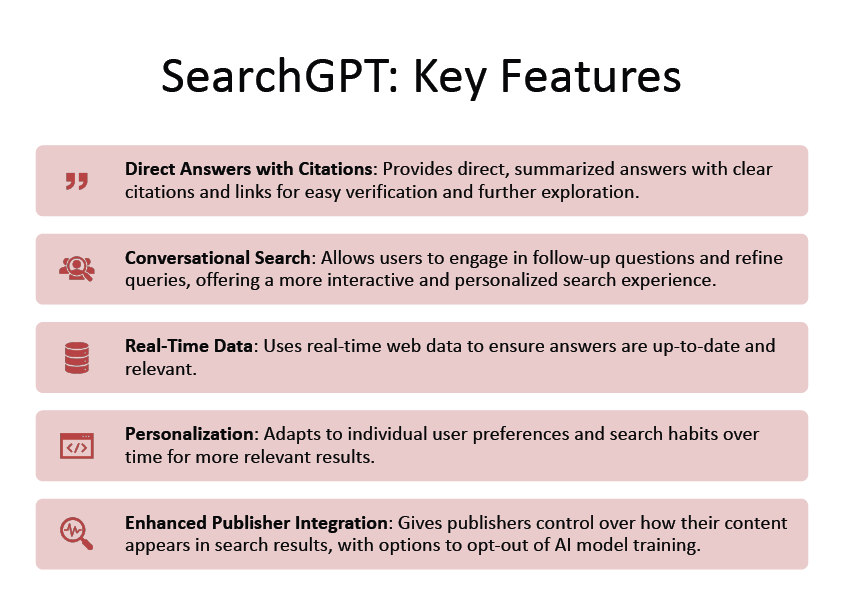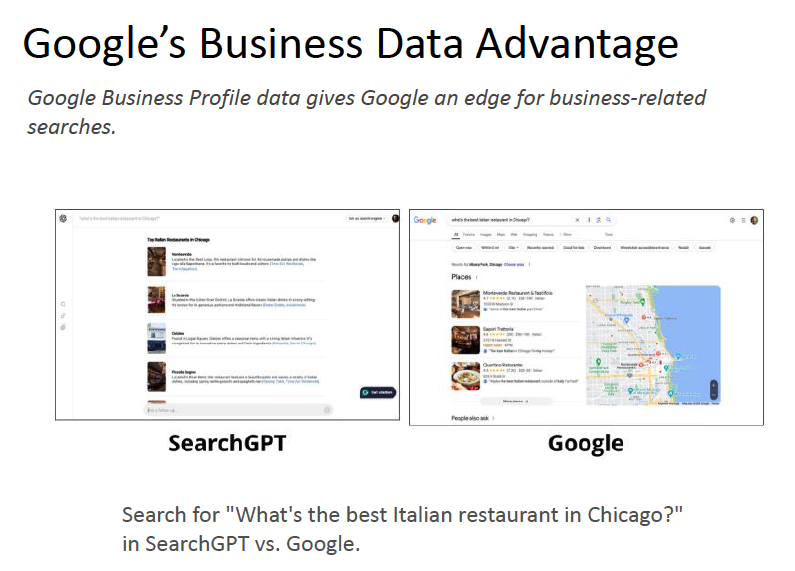ChatGPT has over 200 million weekly active users, doubling its user base since last fall. With large language models (LLMs) like OpenAI’s ChatGPT gaining popularity, the search marketing landscape is undergoing a shift. These AI systems are changing how information is discovered, interpreted, and delivered to users. As a result, traditional Search Engine Optimization (SEO) is evolving, giving rise to new approaches like Generative Engine Optimization (GEO)—strategies focused on improving visibility within AI-generated answers and conversational search experiences.
In this guide, I’ll outline how website owners and digital marketers can optimize their websites and online content for LLMs to maintain visibility and relevance.
Table of Contents
The Evolution of SEO in the Age of LLMs
SEO has always been about making your content more accessible and attractive to search engines. Historically, this meant focusing on keywords, backlinks, content, and metadata to rank higher in search engine results pages (SERPs). However, with the rise of LLMs, how search engines understand and rank content is changing dramatically.
LLMs process language more like humans, understanding context, semantics, and intent rather than just keyword frequency. They can comprehend nuances in language, recognize entities, and understand relationships between concepts. This evolution necessitates a shift from keyword-centric strategies to ones that emphasize content quality, relevance, and user intent.
Also, LLMs are powering new forms of search, such as conversational queries and voice search, which are becoming increasingly popular. Users are interacting with search engines in more natural and conversational ways, asking complex questions and expecting precise answers. As a result, optimizing for LLMs involves a deeper understanding of natural language processing (NLP) and how AI models interpret and generate content.
Understanding How LLMs Process and Retrieve Information
To optimize your content effectively, you must understand how LLMs like GPT-4 process and retrieve information. LLMs are trained on vast amounts of data, learning patterns in language to generate human-like text. They consider context, semantics, and the relationships between words and phrases to produce coherent and relevant responses. LLMs, such as GPT-4 or future iterations, rely on data curated by third parties—often large-scale web crawls and indexes maintained by search engines. If your site doesn’t appear in search results, or if it’s poorly structured and hard to parse, LLMs are far less likely to include your content in their training datasets. Essentially, optimizing for conventional search engines also sets you up for better visibility to LLMs.
One of the key aspects of LLMs is their ability to grasp the context of queries. LLMs can understand the intent behind a user’s question, even if it’s phrased in a complex or conversational manner. They perform semantic analysis to interpret the meaning behind words and phrases, focusing on the user’s intent rather than just keyword matching.
LLMs also excel at entity recognition, identifying and understanding entities such as people, places, and concepts, and their relationships. This allows them to provide more accurate and relevant information. Additionally, they can maintain context over a conversation, making interactions more natural and informative.
Understanding these processes is vital for optimizing content to align with how LLMs interpret and retrieve information. By tailoring your content to match how LLMs understand language, you can improve your visibility and engagement with users.
Strategies for Optimizing Content for LLMs
Focus on High-Quality, Relevant Content
With LLMs, content quality has become more important than ever. High-quality content should provide value to the reader by offering insightful, accurate, and comprehensive information. It’s not just about filling pages with text; it’s about delivering meaningful content that meets the needs and expectations of your audience.
To enhance readability, your content should be well-structured, using headings, subheadings, and clear paragraphs. Incorporating storytelling elements and a conversational tone can make your content more engaging. Additionally, including relevant images, videos, and infographics can enrich the user experience and provide additional context for LLMs.
Search engines powered by LLMs are more adept at understanding and rewarding content that genuinely addresses user queries. Therefore, producing valuable content that answers questions, solves problems, or provides in-depth analysis can improve your visibility.
Ensure easy parsing. Format your content with meaningful headings, bullet points, and short, concise paragraphs. For instance, a tech blog reviewing smartphones could list key features under <ul> tags and use subheadings (<h2>, <h3>) for different phone models, making the structure more explicit.
Emphasize Semantic SEO and Contextual Relevance
Semantic SEO involves optimizing your content around topics and concepts rather than individual keywords. This means creating content that covers a subject comprehensively, addressing all relevant subtopics and related queries.
Use semantic HTML! Instead of relying solely on <div> elements, employ contextually meaningful tags like <article>, <header>, <section>, and <footer>. For example, a news publisher could mark each story with <article> and clear heading structures, making it easier for both readers and crawlers to interpret the content’s purpose.
Organizing your content into topic clusters can help LLMs understand the breadth and depth of your coverage on a subject. Linking related articles within your site not only improves navigation but also establishes relationships between different pieces of content.
Writing in a natural, conversational tone aligns with how users interact with search engines powered by LLMs. Instead of stuffing keywords, focus on using synonyms and related phrases that reflect how people naturally speak and search.
Answering common questions directly in your content can also improve your chances of appearing in featured snippets or voice search results. By understanding and addressing user intent, you make your content more relevant and valuable.
Implement Strategic Text Sequences
Strategic text sequences—deliberately crafted phrasing and ordering of information—are critical for optimizing content for large language models.
Unlike traditional search engines, generative engines don’t just crawl for keywords—they interpret meaning, context, and flow. This makes the structure and sequence of your content essential. Strategic sequences help:
- Align with natural language patterns LLMs favor.
- Surface key information early, improving salience in AI-generated summaries.
- Reinforce topical relevance across multiple semantically related phrases.
The goal is to have your content referenced, cited, or summarized by generative engines. Strategic sequences make that more likely by:
- Front-loading clear, concise value statements.
- Embedding rich semantic context in headings, intros, and conclusions.
- Structuring content to match question-answer or how-to formats, which LLMs often replicate.
Utilize Structured Data and Schema Markup
Structured data helps search engines understand and categorize your content more effectively. Implementing schema markup using vocabulary from schema.org provides explicit clues about the meaning of your content.
Add structured data and validate your markup against schema.org standards. For example, a local business site might use LocalBusiness schema so that search engines and LLM data pipelines can understand it’s a brick-and-mortar store, potentially surfacing it when users ask an LLM about “local services in [city name].”
By adding structured data, you enhance the way your pages appear in search results, potentially including rich snippets with additional information like ratings, prices, and images. This can improve click-through rates and make your content more appealing. Structured data also facilitates inclusion in knowledge graphs and answer boxes, which can be used by LLMs (especially Google’s AI) to generate responses. By providing detailed, structured information about your content, you increase the chances that LLMs will select your content to answer user queries.
Incorporate Entities and Knowledge Graphs
Entities are the foundational elements of semantic search, representing people, places, things, and concepts. Identifying and clearly defining the key entities in your content helps LLMs understand the subject matter. Linking to authoritative sources and including relevant references can reinforce the credibility of your entities. Internal linking between related content on your site establishes relationships and helps LLMs comprehend the connections between different topics.
By aligning your content with existing knowledge graphs and providing accurate, detailed information about entities, you enhance the likelihood that LLMs will recognize and utilize your content.
Optimize for Featured Snippets and Zero-Click Searches
Featured snippets are prime real estate in search results, often displayed at the top of the page and used by search engines to generate answers (especially for search engine-owned LLMs like Google’s Gemini and Microsoft’s Copilot). Optimizing your content to appear in featured snippets can significantly increase your visibility.
Structuring your content in question-and-answer formats can make it more suitable for featured snippets. Providing concise, direct answers to common queries can improve your chances of being selected.
Formatting your content with lists, tables, and bullet points where appropriate can also enhance its appeal for featured snippets. Remember, the goal is to provide clear, easily digestible information that directly addresses user queries.
Ensure Accessibility for LLM Crawlers
Make sure your site is open to crawlers like those used by ChatGPT, Gemini, Copilot, and Perplexity. Allow crawler access via a properly configured robots.txt file, and regularly update XML sitemaps to ensure all relevant content is discoverable.
Optimize Technical SEO with Clean HTML and Metadata
Use clean, semantic HTML to help LLMs accurately interpret your site. Metadata such as title tags, meta descriptions, and header tags (H1-H6) should follow best practices for clarity and context. There is significant overlap between traditional SEO for search engines like Google and optimization for LLMs.
Highlight Brand-Building Content
Ensure your website includes authoritative brand-building content, such as awards, testimonials, case studies, and press mentions. This type of content reinforces your business’s reputation and increases its visibility in LLM responses.
Build Authority on Third-Party Websites
LLMs favor reputable external sources. Publish detailed business profiles on trusted platforms like LinkedIn, Yelp, or Glassdoor. Develop backlinks from high-authority industry websites to strengthen your online presence.
Attract quality backlinks! When other reputable sites link to your content—perhaps a well-respected travel blog links to your in-depth city guide—search engines and data aggregators take notice. Increased authority and discoverability mean a higher likelihood of inclusion in LLM training sets.
Links from reputable websites serve as endorsements in the eyes of both search engines and LLM data pipelines. For example, a cybersecurity blog that earns references from well-known tech publications, industry associations, or academic journals will likely see its credibility—and inclusion likelihood—rise. As a result, when users query LLMs about “steps to improve online safety,” the model is more likely to surface insights derived from that trusted cybersecurity blog.
Digital PR is More Important Than Ever
As generative AI continues to influence how content is discovered and summarized, Digital PR is emerging as a critical pillar of GEO. While traditional link-building remains relevant, it’s no longer just about backlinks—it’s about building brand authority across the broader web. Mentions in reputable publications, interviews, guest posts, and thought leadership pieces all contribute to your digital footprint.
Large language models (LLMs) like Gemini and GPT-4 don’t rely solely on structured metadata or keywords—they synthesize context from across the web. That means your brand’s presence in trustworthy, well-trafficked domains helps reinforce its credibility and increases the likelihood of being referenced or summarized favorably in AI-driven overviews and responses.
Be Active on LLM Training Grounds
Some platforms, like Reddit and Quora, are known sources for LLM training data. Ensure your brand is represented on these platforms by engaging in discussions and providing valuable insights. Designate subject matter experts to monitor and contribute high-quality responses.
Query LLMs and Optimize Content Accordingly
Regularly query LLMs about your brand to understand how your company is represented. For example:
- “Tell me about [company].”
- “What are the pros and cons of working with [company]?”
- “What are the best companies in [industry]?”
- “What is [company]’s unique selling proposition (USP)?”
- “What are the most commonly praised features of [company’s product/service]?”
- “What criticisms do customers have about [company’s product/service]?”
- “How could [company] improve its offerings to serve customers better?”
- “What demographics are most likely to use [company’s product/service]?”
- “Is there a better option for [target markets]?”
- “Which companies dominate the market for [target product/service]?”
- “Why would someone choose [company] over competitors?”
- “How does [company]’s pricing compare to competitors?”
- “How does [competitor] compare to [company] in terms of customer reviews?”
- “What are the common misconceptions about [company]?”
- “What challenges do customers face in [industry]?”
Once you get the answers, look closely at the sources the AI references. This process provides a clear roadmap to:
1. Identify where the AI pulls training data related to your company and industry.
2. Highlight areas online where you need to optimize information to make your company stand out.
3. Gain competitor insights and identify opportunities to improve your products or services while enhancing the AI’s understanding of your company.
Use the insights from these queries to refine and update your website content, addressing any gaps or misconceptions.
Why Structure and Authority Matter
Ultimately, building accessible, semantically rich, and authoritative content puts you in a stronger position to be included in large language models. Think of your website as a well-organized library—clear labeling, consistent categorization, and reliable content help both humans and AI find exactly what they need. By meeting these standards, you not only improve your SEO and user experience but also increase the likelihood that your site’s insights and expertise will inform the next generation of AI-driven knowledge tools.
Optimizing for Specific LLM Platforms
As Large Language Models continue to evolve, different platforms offer unique capabilities and opportunities for content optimization.
In this section, we’ll explore how to optimize your website for three major LLM platforms: ChatGPT, Google Gemini, and Microsoft Copilot. We’ll highlight how each platform differs and provide actionable steps to enhance your content for each one.
Optimizing for ChatGPT/SearchGPT
ChatGPT is a conversational AI developed by OpenAI, based on the GPT-4 architecture. It’s designed to understand and generate human-like text, making it ideal for customer service bots, virtual assistants, and interactive user engagement. ChatGPT is widely used for answering questions, providing recommendations, and engaging in dynamic conversations with users.
SearchGPT is an example of how large language models are reshaping how users discover content. Unlike traditional keyword-based search engines, SearchGPT utilizes conversational AI to interpret user intent, contextualize queries, and deliver highly relevant, detailed answers directly within its interface. This shift emphasizes the importance of creating content optimized not just for traditional search engines, but also for LLMs like SearchGPT.

How ChatGPT/SearchGPT Differs
- Conversational Focus: ChatGPT excels in understanding context over multiple turns in a conversation.
- Wide Accessibility: It’s available through OpenAI’s API and platforms like the OpenAI Playground, making it accessible for integration into various applications.
- Human-Like Responses: It generates responses that are coherent and contextually relevant, enhancing user interaction.
Steps to Optimize for ChatGPT/SearchGPT
- Develop Conversational Content: Craft your website content in a conversational tone. Anticipate the questions users might ask and provide clear, direct answers. This approach aligns with how ChatGPT processes and generates responses.
- Implement FAQs and Q&A Sections: Include comprehensive FAQs that address common user inquiries. Structured Q&A formats make it easier for ChatGPT to extract and relay information to users seeking specific answers.
- Use Clear and Natural Language: Avoid jargon and overly complex sentences. Write in plain language that is easy to understand, ensuring that ChatGPT can interpret and communicate your content effectively.
- Optimize Metadata and Structured Data: Utilize schema markup to provide context about your content. This helps ChatGPT understand the structure and meaning of your website’s information.
- Regularly Update Content: Keep your content current to ensure that ChatGPT provides the most accurate and relevant information to users. Regular updates also signal to AI models that your site is a reliable source.
- Target Long-Tail Questions: Include specific, user-focused questions and answers in your content.
- Enhance Semantic Richness: Use synonyms, related phrases, and contextual language to make your content highly relatable.
Optimizing for Google Gemini, AI Overviews, and AI Mode
Google is clearly moving away from traditional search and toward a more conversational, AI-powered experience. A key part of this shift is the integration of Gemini, Google’s next-generation AI model, into features like AI Overviews, which began rolling out in 2024. Instead of returning a list of links, AI Overviews synthesize information from multiple sources to provide direct, narrative-style answers—similar to how tools like ChatGPT respond.
In early 2025, Google took this further with the announcement of AI Mode, a dedicated chatbot-like interface within Search. AI Mode allows for more interactive, multi-turn conversations, offering users detailed answers, follow-ups, and contextual suggestions—all powered by advanced Gemini models.
Together, these changes signal a major transition in how visibility and relevance work online. Traditional SEO is no longer enough; brands now need to ensure their content is structured and written in ways that AI systems can understand, summarize, and surface effectively in these new, AI-first environments.

How Google Gemini Differs
- Multimodal Processing: Gemini aims to process and generate not just text but also images and other forms of data, providing richer interactions.
- Deep Integration with Google Ecosystem: It’s expected to be integrated across Google’s services (including Google Business Profile, as outlined above), impacting search, assistant features, and more.
- Enhanced Contextual Understanding: With Google’s extensive data resources, Gemini is poised to offer superior context and relevance in responses.
Steps to Optimize for Google Gemini
- Optimize Your Google Business Profile: A well-maintained Google Business Profile (GBP) significantly enhances your visibility in Gemini results:
- Complete Your Profile: Ensure all information is accurate, including business name, address, phone number (NAP), website link, and business hours.
- Use Keywords in Your Description: Incorporate relevant keywords into your business description to improve discoverability in local searches and LLM responses.
- Add High-Quality Multimedia: Upload updated images and videos showcasing your business, as these elements will be prioritized in Gemini’s multimodal results.
- Encourage Reviews: Actively solicit and respond to customer reviews. High-quality reviews build authority and increase the likelihood of being featured prominently in search and LLM responses.
- Post Regular Updates: Use the Posts feature to share news, promotions, or events. Fresh, consistent updates signal active engagement and improve content relevance.
- Enhance Multimodal Content: Incorporate high-quality images, videos, and infographics into your content. Ensure all multimedia elements are optimized with descriptive alt text and captions, as Gemini’s multimodal capabilities will leverage this information.
- Leverage Google’s Structured Data: Implement Google’s rich result features by using structured data markup. This can improve how your content appears in search results and how Gemini accesses and presents your information.
- Optimize for Semantic Search: Focus on topic modeling and semantic SEO. Create content clusters that cover broad topics comprehensively, linking related articles to establish authority on a subject.
- Improve Page Experience: Ensure your website is mobile-friendly, loads quickly, and provides a seamless user experience. Google considers page experience in its rankings, which will likely influence how Gemini prioritizes content.
- Stay Informed on Gemini Updates: Keep abreast of announcements and guidelines from Google regarding Gemini. Adapting to new features and best practices will help you maintain optimization as the platform evolves.
Optimizing for Microsoft Copilot
Microsoft Copilot is an AI-powered assistant integrated into Microsoft’s suite of productivity tools, including Word, Excel, PowerPoint, and Outlook. It leverages GPT-4 to assist users in generating content, analyzing data, and automating tasks within the Microsoft 365 ecosystem.
How Microsoft Copilot Differs
- Productivity Enhancement: Copilot is designed to improve efficiency within professional applications, aiding in content creation and data management.
- Contextual Integration: It works within documents and spreadsheets, understanding the context to provide relevant suggestions.
- Enterprise Focus: Aimed at businesses, Copilot helps streamline workflows and improve collaboration.
Steps to Optimize for Microsoft Copilot
- Create Comprehensive and Well-Structured Documents: When producing documents that may be used within Microsoft 365, ensure they are well-organized with clear headings, subheadings, and consistent formatting. Copilot relies on this structure to provide accurate assistance.
- Utilize Metadata and Tags: Incorporate metadata into your documents to help Copilot understand the context and purpose of the content. This can improve its ability to assist with tasks like summarizing or extracting key information.
- Develop Templates and Standardized Content: Create templates for common documents, emails, or reports. Standardization helps Copilot learn from your patterns and provide more tailored suggestions.
- Enhance Data Accessibility: For spreadsheets and databases, ensure data is clean, well-labeled, and organized logically. Copilot can then more effectively help with data analysis, visualization, and formula generation.
- Stay Updated with Microsoft’s AI Developments: Microsoft frequently updates its AI tools. Keeping informed about new features and capabilities allows you to adjust your optimization strategies accordingly.
Getting Your Content into LLMs
Ensuring that LLMs can access and learn from your content is essential for visibility.
Ensuring Crawlability and Indexability
Optimizing your site for crawlability involves allowing search engines to access important pages. Properly configuring your robots.txt file and using sitemaps can guide crawlers effectively.
Avoiding duplicate content by using canonical tags helps search engines understand the preferred version of a page. Ensuring your site is free of technical issues that might hinder crawling or indexing is also important.
Submitting Content to Data Repositories
Submitting your content to platforms and repositories that feed data to LLMs can enhance accessibility. This includes utilizing content feeds, APIs, and partnerships with data providers.
By making your data accessible to AI models, you increase the likelihood that your content will be included in LLM training datasets and utilized in responses.
Monitoring and Updating Content Regularly
Keeping your content fresh and up-to-date is vital. Regularly updating information ensures it remains current and relevant.
Monitoring performance using analytics helps you understand how users interact with your content. Encouraging user feedback can provide valuable insights into areas for improvement.
By maintaining an active approach to content management, you enhance the value and appeal of your site to both users and LLMs.
Best Practices for Staying Ahead
As LLM technology advances, new forms of data representation and schema vocabularies are likely to emerge. Staying updated with industry best practices—whether through following search engine guidelines, engaging in SEO communities, or monitoring emerging standards like Google’s evolving structured data recommendations—will keep your site ahead of the curve. Regular technical audits, content reviews, and outreach efforts that earn authoritative backlinks will all contribute to a site structure and content quality that aligns naturally with LLM data selection criteria.
In essence, by blending human-centric design, clear organization, authoritative referencing, and strategic markup, you set the stage for your site to inform the next generation of AI-driven tools. The payoff isn’t just theoretical: as conversational interfaces powered by LLMs become more integrated into search, browsing, and decision-making processes, investing in LLM-oriented optimization today ensures that your brand’s voice remains part of tomorrow’s digital conversation.
Experimentation is key. Testing new approaches and analyzing their impact helps you refine your methods. Collaboration with AI experts and other professionals can enhance your optimization efforts.
Taking a holistic approach by integrating SEO, content marketing, and user experience strategies ensures you address all aspects of your online presence.
Need Help Optimizing Your Website for LLMs?
Ice Nine Online is here to assist if you want to elevate your website’s performance in the era of AI-driven search. We specialize in optimizing websites for Large Language Models, ensuring your content reaches your target audience and resonates with the advanced algorithms of today’s leading AI technologies.
Our team understands the nuances of LLMs and how they interpret and prioritize content. We offer personalized strategies focusing on high-quality content creation, semantic SEO, structured data implementation, and enhanced user experience. By partnering with us, you’ll gain access to cutting-edge techniques that keep you ahead of the curve.
Ready to transform your online presence and embrace the future of digital marketing? Contact Ice Nine Online today to discover how we can help you optimize your website for Large Language Models and achieve unparalleled visibility and engagement.
Share this Post


Comments
Today, I learned many things from your content. Thank you so much for sharing your information.